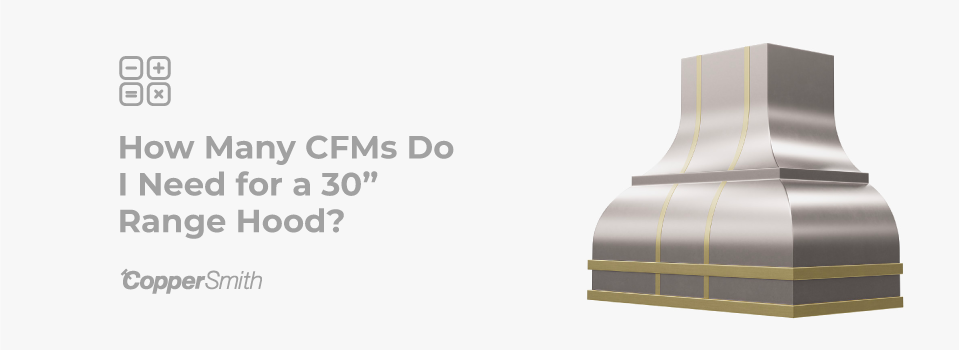A range hood is great for removing odor and other airborne contaminants generated by cooking as it is technically designed to ventilate the air in a kitchen efficiently. But did you know that each range hood can only ventilate a certain amount of air according to its cubic feet per minute rate?
In this article, we'll look at what cubic feet per minute mean and how many would be needed for a 36" range hood.
What Does "Range Hood CFM" Mean?

The cubic foot per minute (CFM) rating is the standard measurement for the quality of stove hoods and ranges. A range hood works like a chimney, exhausting stale cooking fumes into the outdoors. If the exhaust vents are too small, the airflow could be inadequate to prevent smoke buildup inside the house.
A range hood typically operates between 200 and 400 CFM.
Does the Type of Range Hood Matter?
Yes!
Every model will come with its own unique perks, which could influence its CFMs. Let's take a look at two examples.
Wall-mount and under-cabinet range
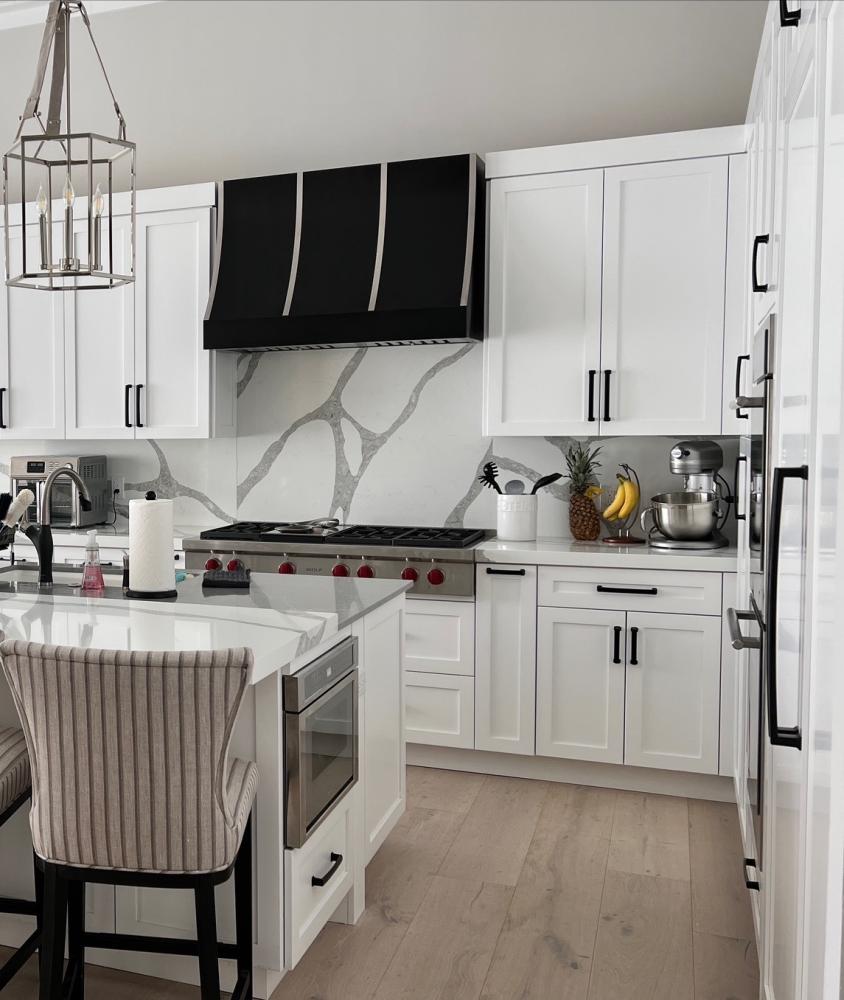
A wall-mounted range hood requires a large opening in the ceiling above it. This allows the exhaust to flow freely out of the room.
Wall-mounted range hoods are great because they allow you to install them anywhere in your kitchen without worrying about blocking natural light or heat.
They would come with a ventilation fan that pulls air away from the cooking surface into a vent duct. This helps keep food warm while keeping the rest of the kitchen cool.
Under-cabinet range hoods are easy to install because they do not require a hole being made in the ceiling. They are usually placed next to a stove or oven. Under-cabinet range hoods are often used in restaurants where space is limited.
Under-cabinet range hoods are similar to wall-mount units, except they hang underneath the countertop and can be smaller and quieter.
Island range
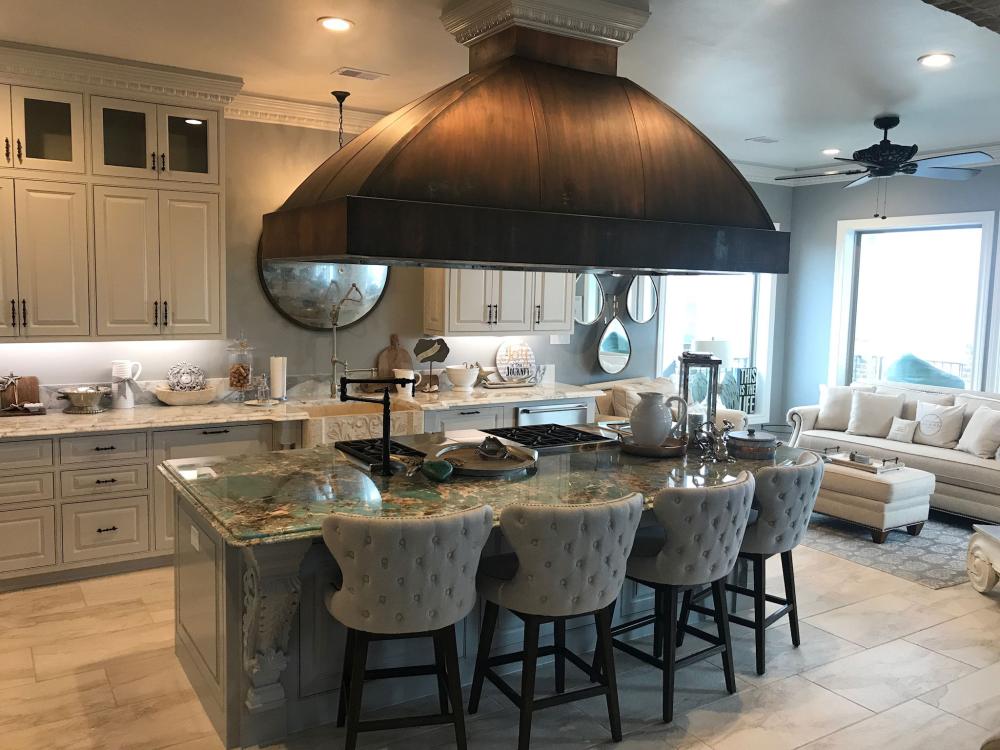
These residential range hoods are pretty self-explanatory; they hang from the ceiling over a kitchen island, where the stovetop would be.
Ideally, the island range hood should have at least the same width as the island cooktop to effectively vent out the air. Therefore, having a larger kitchen would be a good indicator to install a large island range with an adequate kitchen exhaust fan.
What Other Factors Should I Consider for the Right CFMs?
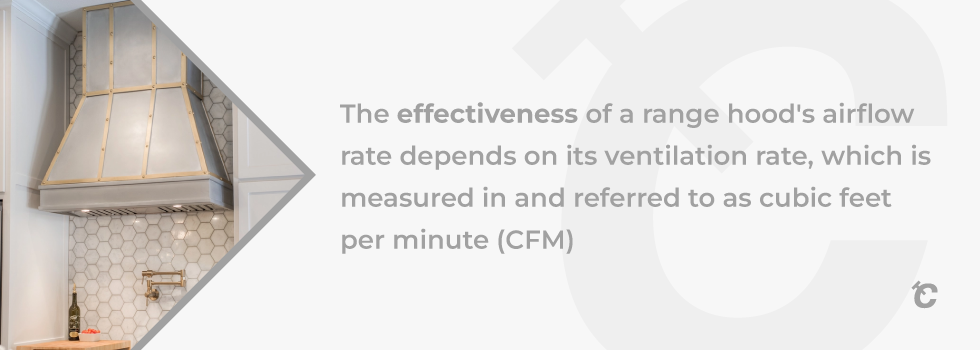
We highlighted the various models, but a wide variety of other factors also determine how many CFMs your range hood should have to operate effectively.
Kitchen size
A range hood should be large enough to ventilate the air in your kitchen. If your kitchen design is relatively small, then a range hood of a lower CFM would work fine in removing strong odors.
You can calculate how many cubic feet per minute (CFM) of air your range hood needs by multiplying the square footage of your kitchen by 12. This number gives you the total cubic feet of air required by kitchen range hoods.
For example, if you have 2,500 square feet of kitchen space, multiply that by 12 to determine the amount of air your range hood requires. In this case, the minimum requirement for ventilation power would be about 22 cubic feet of air every minute.
Cooking habits
Your kitchen habits and cooking style can affect how much air you use during cooking.
If you tend to cook quickly, choosing a lower CFM model might make sense. On the other hand, if you like to spend long hours preparing meals or do heavy cooking, you might want to invest in a high CFM range hood.
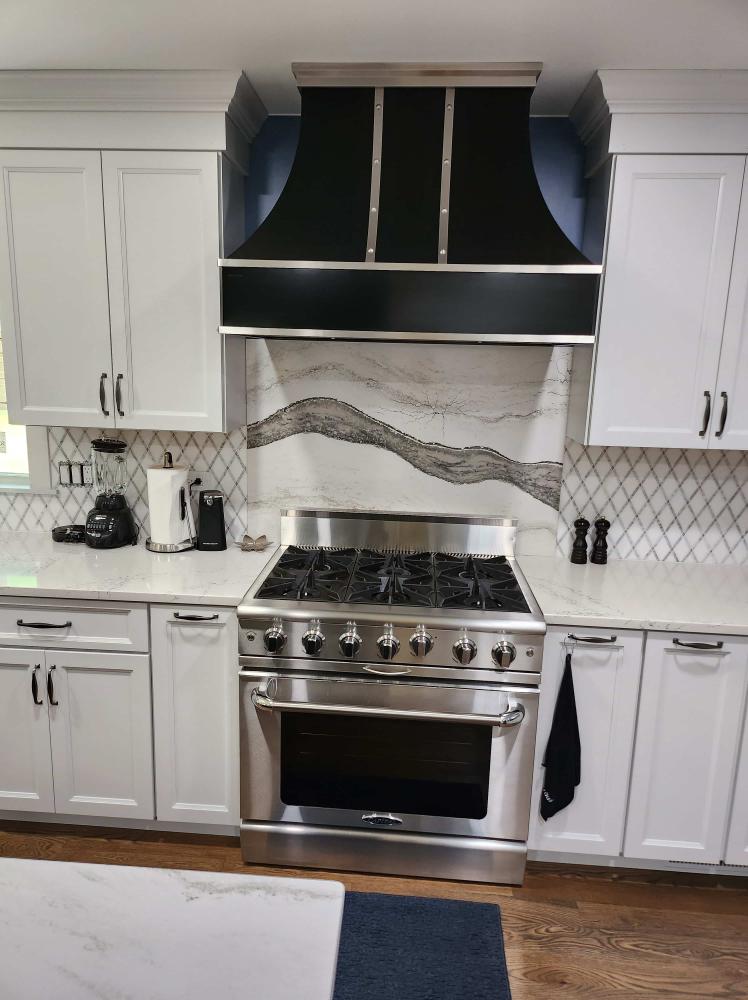
Quality of ducting
Smooth metal ducting is the most popular type of ducting used in residential HVAC systems. This ducting is easy to install and maintain but can come with its issues.
For example, smooth metal ducting requires proper installation techniques, which include careful planning, adequate space around the ductwork, and a trained professional. In addition, smooth metal ducting is prone to corrosion, especially where moisture collects.
Corrugated ducting is less expensive than smooth metal ducting. However, corrugated ducting is noisy and tends to collect dust and debris, which can limit its effectiveness in being used for ventilation.
The ductwork for your range hood significantly impacts how much air flows into your cooking area. You want enough airflow to keep food warm and prevent smoke buildup, but not too little airflow.
You'll need to factor in the duct length, shape, and size before determining the best amount of CFM for your needs. Duct sizing tends to range from 4 to 6 inches in diameter for lower CFM ratings and 8 to 10 inches in diameter for higher CFM ratings.
However, minimum duct sizes should be at least 6 inches for range hoods with up to 400 CFMs.
Length of vent pipe
Ventilation systems consist of pipes carrying outside air into the building, which is cooled down and circulated inside. The longer the length of the pipe, the greater the amount of heat transfer. However, there are tradeoffs. For example, a long pipe causes an increased pressure drop and reduces airflow rates. This increases energy consumption.
The best place to put a vent is near the ceiling or floor. Placing vents too close to the ground allows warm air to rise up through the vent. This creates negative pressure, causing cold air to leak out of the ductwork.
Apart from that, the longer the vent runs, the worse the airflow efficiency becomes for the range hood. Therefore, the best vents are very short, such as a few feet.
Height of mounting
The height of your range hood vent depends on several factors, including where you want to mount it, how far away from the cooktop your range hood needs to be mounted, and what type of cooktop you have.
The ideal distance between the cooktop and the range hood is about 30 inches. This allows adequate airflow without being too far away from the cooktops.
A range hood that is too high won't allow enough room for air to circulate around the cooktop. This can cause the temperature inside the oven to rise and affect cooking performance.
A range hood that is too low will restrict the amount of air that flows into the kitchen and could lead to smoke buildup.
If you have a gas cooktop, you'll want to avoid placing the range hood closer than 24 inches from the burner because you don't want the burners to interfere with the flow of air.
You can still use a range hood placed too close to the cooktop, however, as long as there isn't anything obstructing the path of the air.
For electric cooktops, you'll need to place the range hood somewhere between 28 inches and 36 inches away from the cooktops depending on the size of the cooking area.
If you have multiple burners, you'll also need to keep the vents farther apart to ensure proper circulation throughout the kitchen.
How Many CFMs Are Needed for My 36-Inch Range Hood?
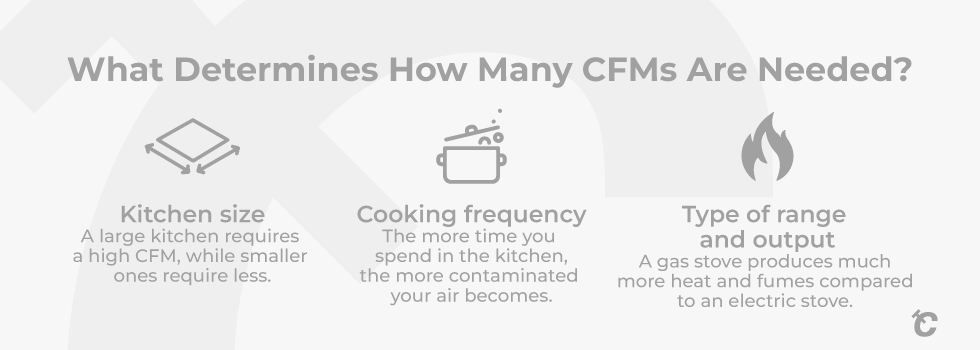
Based on the above, we now understand that there are various factors that contribute to the amount of CFMs required. On top of these factors, your 36" range hood may require even more or less CFMs depending on the type of stovetop it is being operated above.
Let's take a look at two types of stovetops and how each affects the CFMs of a 36" range hood.
Electric stove
An electric stove does not require as much air circulation as a gas cooktop. However, some electric stoves tend to require 300 CFM of ventilation.
If you have an island range hood placed above an electric stove, you'll need to multiply 150 CM for every linear foot of your cooktop to determine the right CFM. For example, if you have a three-foot wide electric stove, your 36" range hood would need to be able to ventilate 450 CFM of air.
If you have a wall-mounted or under-cabinet range hood, you can multiply 100 CFM for every linear foot. Going with the previous example, a three-foot wide electric stove would need at least 300 CFM of air to be ventilated.
Gas stove
Because a gas stove creates much more heat and fumes that an electric one, calculating the amount of CFM is different for gas stoves compared to electric stovetops.
You will need to determine the British Thermal Units (BTU) for all the burners on your gas stovetop. BTU represents the energy required for heating a pound of water by one degree Fahrenheit. Typically every cooktop comes with a BTU rating, which you could find in its manual.
For every 1 CFM, you would need a one-of-a-hundredth BTU. This small size is due to there being thousands of BTUs on a stovetop, whereas range hoods can have CFMs only up to several hundred to a few thousand.
Assuming your gas stove has 10,000 BTU per burner, a four-burner would require 40,000 BTU. You can determine the amount of CFM by dividing this amount by 100; in short, your 36" range hood would need a 400 CFM rating.
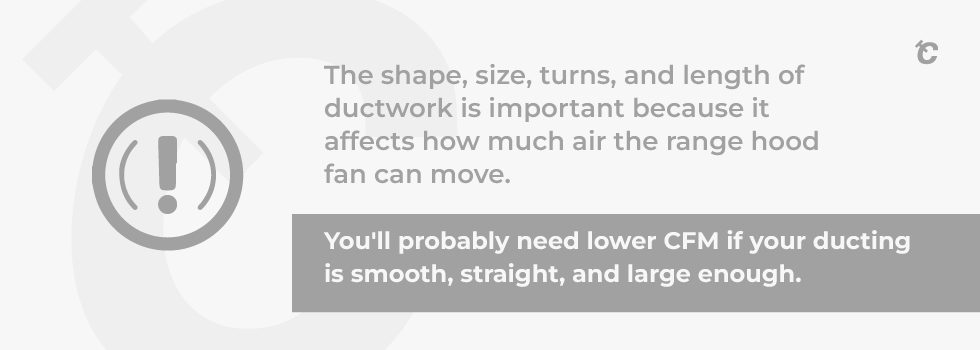
Conclusion
Determining the amount of CFMs you need for your 36" range hood isn't always straightforward due to multiple factors you need to consider. But one of the easiest ways is taking a rough estimate based on the type of stovetop that you have. Using this information, you can estimate that you may need about 300-400 CFM for your 36" range hood.
If you found this article helpful or are keen to learn more about range hoods, you can read more on our website!

